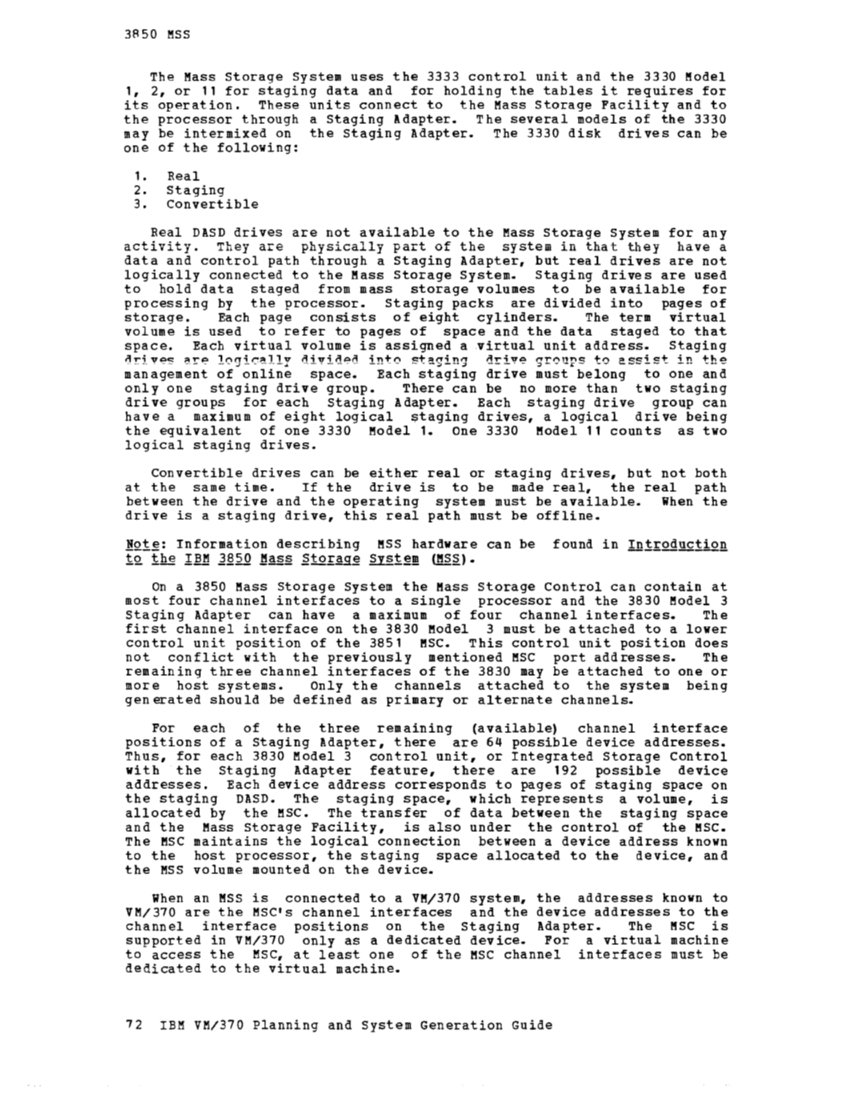Generating a VM/370
available, allowing the user to place significant amounts of tape and
DASD shelf data under direct control of the system.
machines concurrently running
System.
by
processor and uniprocessor mode),
uniprocessor mode), the
The major hardware components of
the System/370
provides the operational control for the components of the
System. It is physically housed in the 3851
A, B, C, and D. A host system attaches to one of these through a
control unit position of either the byte multiplexer channel or block
multiplexer channel operating in burst mode. The
is used for transfer of orders, commands, control information, and
status messages between the host system and the
user application data.
running in a virtual machine under
connected to the same
dedicated to each virtual machine. Each virtual machine using an
connected to the











































































































































































































































































































































































































































































































































